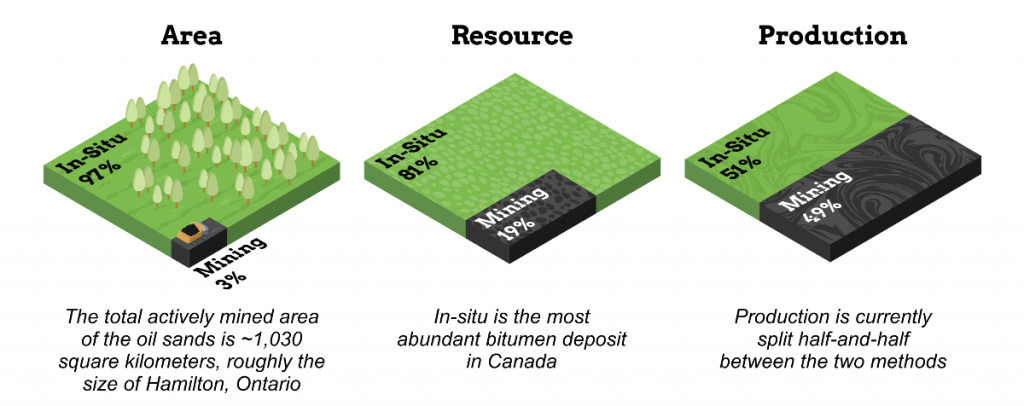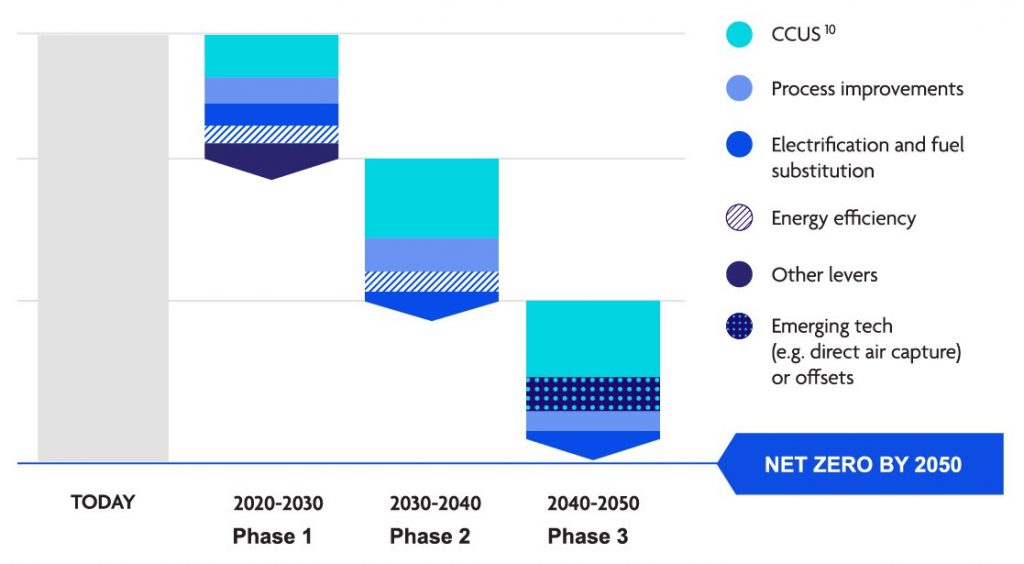Courtesy of ENERGYminute
See more articles and infographics from ENERGYminute HERE

Odd couples makes for great stories.
Like Mulder and Scully solving the great paranormal cases of the 90s, a coalition of competing oil companies are working together to solve the great oil sands’ decarbonization problems of the 21st century. The Pathways Alliance just announced the first major project on the path to achieving net zero by 2050.
Background: The Canadian oil sands – often referred to as the tar sands – are a massive deposit of bitumen sitting in unconsolidated sands just below the ground surface in northeastern Alberta.
- These are by no means insignificant oil fields. With proven reserves of 165 billion barrel of oil, they produced more than 3 million barrels per day of oil, roughly 3 percent of global oil consumption
How they work: In contrast to conventional oil fields that use traditional drilling techniques and flow oil to the surface more freely than prosecco at a boozy brunch, oil sands use unconventional production methods like strip mining or heating up the oil to allow it to move (known as in-situ production).
Distribution of oil sands by type

The techniques used by companies to extract bitumen from the two types of oil sand deposits both consume lots of energy:
- Mining operations, similar to traditional open pit operations used by mining companies, essentially use a fleet of enormous diesel Tonka trucks to dig for oil-soaked sediments.
- In-situ production, while doing away with the earth works, turns the subterranean oil fields into giant Swedish saunas by pumping large volumes of steam into the reservoir to melt the bitumen. The process uses large amounts of natural gas, using the equivalent of 30 percent of Alberta’s domestic natural gas production.
The pushback: The energy-intensive processes needed to produce and upgrade the oil sands receive plenty of ire from environmentalists concerned with rising greenhouse gas emissions.
Efforts to limit the growth of the oil sands have included pipeline blockades, climate protests, and significant donation money put towards limiting the expansion of oil sands operations.
- In 2019, a public inquiry by the Alberta Government found $1.28 billion in foreign funding had been spent on environmental groups, many with specific anti-pipeline campaigns and prescribed “anti-Alberta resource development activity”.
The response: To address the environmental concerns, a coalition of oil sands companies put together the Pathways Alliance to collectively drive the oil sands to hit net zero emissions by 2050.
- Companies involved represent 95 percent of all oil sands production and include Canadian Natural Resources Ltd., Cenovus, ConocoPhillips, Imperial Oil, MEG Energy, and Suncor.
The big question: With both strip mining and in-situ production being such unique ways of producing oil, is it easier or harder to decarbonize the oil sands compared to conventional oil fields?
Likely, the oil sands will be much easier to decarbonize
While traditional oil and gas requires huge fleets of rigs and other servicing equipment that creates thousands of individual emissions sources, oil sands have only small number of very large emission sources. If the large sources can be addressed, net zero is much easier to achieve.
Oil sands’ Pathways Alliance three phased approach

Courtesy of Pathways Alliance
The plan’s first phase includes a focus on carbon capture, storage and utilization (CCUS).
Last week, the Pathways Alliance announced plans to invest $16.5 billion in a massive carbon capture facility before 2030. Then, a combination of technologies, low-emissions heat and power sources, and carbon offsets will be employed to reduce or offset the rest.
Net zero doesn’t mean zero oil
For the next few decades, oil will likely continue to play a large role in transportation. BloombergNEF estimates that even with rapid adoption of electric vehicles, the number of internal combustion engines on the road won’t peak until 2035, and will only then start to decline from there.
- The oil-free replacements for heavy-duty trucking, shipping, and air travel will all likely happen further down the line as these technologies are less advanced.
Even after transportation no longer uses oil-based fuels, there is still expected to be a wide and growing use of non-combustion oil products like asphalt, plastics, pharmaceuticals, fertilizers, and more.
Bottom line: Finding ways to produce low-emission oil will be important for decades to come. A coalition of competing companies looking to solve collective problems is an important first step in solving a large global problem.
Share This:





 CDN NEWS |
CDN NEWS |  US NEWS
US NEWS 





























COMMENTARY Joe Oliver: Fool Me Once, Shame on You. Carney and the Liberals Trying to Fool Me Four Times? Seriously?